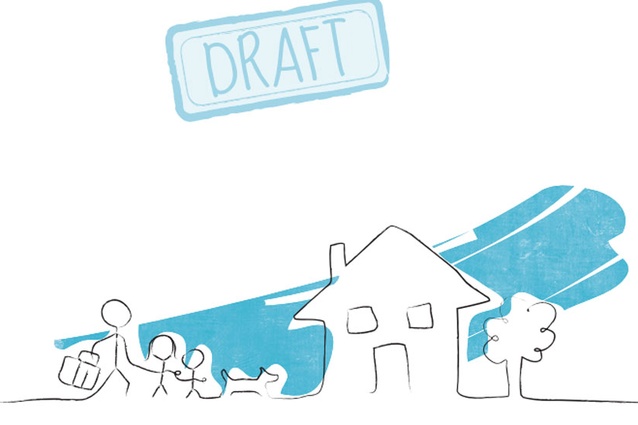Productivity Commission lands a whopper report on housing affordability
Essential Christmas reading for those interested in issues surrounding housing affordability – the Productivity Commission's 229-page draft report.
At 229 pages the new Productivity Commission’s draft report on its inquiry into Housing Affordability in New Zealand is one whopper of a stocking filler for anyone who isn’t yet tired of the never-ending conundrums that surround the housing market.
Architecture Now readers will be most interested in the section on urban planning and housing affordability, which is followed by sections about charging for infrastructure (see also the useful appendix), building regulations and affordability, and the negative performance of the building industry.
These are the sections where the report’s authors at the Productivity Commission (the draft report and summary documents can be read at productivity.govt.nz) shine the most light on the actual keyword of productivity, and between them these four sections give rise to 14 out of the report’s modest total of 17 recommendations.
If there are any headlines from the report they will likely come from the clinical dismantling of the case for a Capital Gains Tax – rather than the call for significant tracts of greenfield and brownfield land to be brought to the market in Auckland, or the nebulous call for territorial authorities to “adopt a strategy that allows both intensification within urban boundaries and orderly expansion beyond them”.
One of the few storylines to emerge from this lengthy report is that while the most well-off have been building bigger, more high-end, more high-spec houses, the less well-off are building and owning less and less. And while a distinctly upper middle-class angst about intensification persists, the fact is that the construction of multi-unit dwellings has been in a decline and the many positive meanings and dimensions of intensification left largely unexplored and poorly debated.
The subtext to this Housing Affordability report is an inquiry into what it will take for the construction sector to be lifted out of the doldrums – confirmed yet again by the latest Westpac Construction Review (which can be read here) ] – in order to deliver new housing en masse.
In part the problem is that we have a residential construction industry that is, in the words of the report, a “fragmented ‘cottage industry’ dominated by very small independent builders constructing bespoke homes” – an industry with low levels of innovation and skills issues and lack of scale. In the year to May 2010, just five firms are cited as having built more than 100 houses apiece. Yet, if more houses could be built in a hurry and if the market could be flooded with more available sections of land, the argument goes, then the price pressures in the market would somehow suddenly dissipate.
What’s also missing apparently are enough institutions and institutional investors to create enough “large-scale landlords” to house a growing sea of renters. There is apparently a Social Housing Fund on the horizon, but this Productivity Commission report – in perhaps the boldest statements it makes – declares it to be moderate at best, and in dire need of being increased if the expectations of an increase in future rental housing provision are going to have any real chance of success.
Overview in brief
The Productivity Commission’s draft report on its inquiry into Housing Affordability firstly covers the New Zealand housing scene and housing investment, inclusive of the house price cycle, market drivers, rise of the private rental market, the quality of the housing stock and ongoing challenges for the housing market.
Across whole-of-market housing affordability there is some lengthy analysis of housing distribution and trends, and impacts of population and demographic changes – such as implications for tenure choice, and, again, house prices. By page 168, the report brings together three key issues in a section titled “Where housing affordability bites”, before the report ends with a chapter on rural Maori housing.
Those three key issues are current government housing assistance, community housing and the private rental market.
This is where the Productivity Commission turns its attention to what might seem blindingly obvious: “that housing affordability issues tend to be most acute for low-income households” – with particular impact noted for those who are younger, single, or belong to an ethnic group other than New Zealand European.
It is noted that there are limited options for these households given that eligibility criteria for State Housing has narrowed and there is only limited housing provided by the community sector.
“Most rely on the private rental market, with assistance from the Accommodation Supplement. There are few long-term secure options for those people on low incomes who face a lifetime of renting”.
The draft report is open for submissions until 10 February, with a subsequent deadline of 16 March for the final report to Government.










